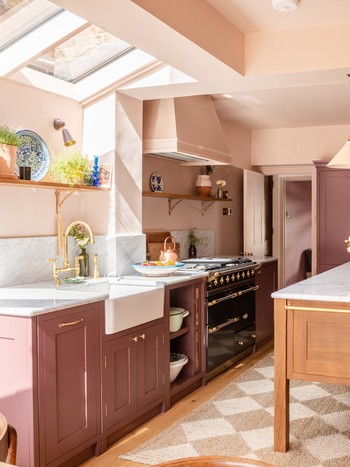Rely on Expert Workmanship for Tailored Legs For Kitchen Island Concepts
Rely on Expert Workmanship for Tailored Legs For Kitchen Island Concepts
Blog Article
An Overview to Choosing the Perfect Legs For Cooking Area Island for Your Home
Picking the suitable legs for your kitchen area island is a nuanced decision that influences both the performance and visual charm of this central room. Aspects such as height, materials, and style play a crucial function in harmonizing your island with the general cooking area layout. In addition, comprehending the value of security and upkeep can dramatically affect your selection. As you consider these aspects, it becomes apparent that the appropriate legs can change not just the look of your kitchen yet also its functionality for several years to find. What particular features should you prioritize in this choice procedure?

Recognizing Kitchen Island Legs
When selecting legs for a cooking area island, it's crucial to recognize their useful and aesthetic roles in the overall style. The legs act as a vital support group, guaranteeing stability and longevity for the island, which commonly operates as a work area, dining location, or gathering place. The option of material and building strategy have to be robust enough to withstand daily use and prospective wear.
In enhancement to their architectural responsibilities, legs add significantly to the island's visual charm. They can boost the kitchen area's design, whether with standard, modern, or diverse layouts. The elevation and proportion of the legs are also important considerations; they should harmonize with the island's kitchen counter height while ensuring comfy seating for those using the room.
Additionally, the leg design can influence the general flow of the kitchen area. Open, ventilated leg designs can develop a feeling of lightness, while solid, significant legs might convey a more based and stable visual - Legs For Kitchen Island. Comprehending these useful and visual aspects will guide homeowners in making notified choices that match their cooking area's style and improve its functionality
Popular Styles and Materials
The choice of legs for a kitchen area island includes a range of preferred designs and materials, each offering one-of-a-kind qualities that can boost both capability and aesthetic appeals. Amongst the most desired styles are modern, rustic, and traditional. Contemporary legs typically feature streamlined, minimalist styles that highlight simplicity and clean lines, making them excellent for modern kitchen areas. Rustic designs, on the various other hand, welcome natural environments and typically display redeemed wood or troubled surfaces, including heat and appeal to the space. Standard legs generally display ornate details and workmanship, boosting traditional cooking area layouts.

Height and Security Factors To Consider

Stability is one more vital consideration. The legs of the kitchen area island need to supply ample assistance, making sure that the structure can stand up to day-to-day use without tottering or moving. Material option plays a substantial duty in stability; steel legs, for example, have a tendency to provide better toughness contrasted to wood. Additionally, ensuring that the island is securely secured to the flooring or wall surface can boost stability, particularly for bigger islands that may birth considerable weight.
Matching Your Kitchen Visual
Picking the right legs for your cooking area island goes past performance; it additionally plays a considerable duty in the total aesthetic of the room (Legs For Kitchen Island). When selecting legs, take into consideration the design style of your kitchen area.
Legs that match or comparison with your island's surface and surrounding kitchen cabinetry can check that develop visual consistency or striking focal points. Furthermore, take into consideration the surface of the legs; matte, glossy, or distinctive surfaces can considerably influence the overall feeling of the kitchen.
Installment and Upkeep Tips
Setting up kitchen area island legs needs mindful focus to information to make certain both security and aesthetic appeal. Utilize a stud finder to find wall studs if you here are attaching the legs to a wall or making use of brackets for added support.
When protecting the legs, make use of high-grade screws and, if needed, wood adhesive for additional strength. For metal legs, make certain that you are using ideal supports and tools to avoid damage to your flooring. It is suggested to look for levelness after installation, making changes as required to avoid wobbling.
Maintenance is similarly vital for long life - Legs For Kitchen Island. Consistently examine the legs for any kind of indications of wear or helping to loosen, specifically in high-traffic locations. Clean the legs with a suitable cleaner, avoiding abrasive products that might damage the surface. For wooden legs, think about using a timber conditioner occasionally to maintain their surface. By adhering to these installment and upkeep pointers, you can ensure that your cooking area island legs remain both useful and visually appealing.
Conclusion
In final thought, picking the suitable legs for a kitchen area island requires careful factor to consider of elevation, stability, and visual compatibility. By choosing suitable materials and designs that straighten with the overall cooking area style, functionality can be boosted while keeping visual appeal. Appropriate installation and recurring upkeep further contribute to the resilience and discover here longevity of the kitchen island. Ultimately, thoughtful leg choice plays a crucial duty in raising both the usefulness and design of the kitchen room.
When choosing legs for a cooking area island, it's necessary to recognize their aesthetic and functional duties in the general design. Open, ventilated leg designs can develop a sense of lightness, while solid, considerable legs might communicate an extra grounded and steady visual. The legs of the kitchen island need to provide adequate assistance, guaranteeing that the framework can endure day-to-day use without tottering or changing.Mounting kitchen island legs needs mindful focus to detail to make certain both stability and aesthetic allure.In verdict, choosing the proper legs for a cooking area island requires cautious factor to consider of height, security, and aesthetic compatibility.
Report this page